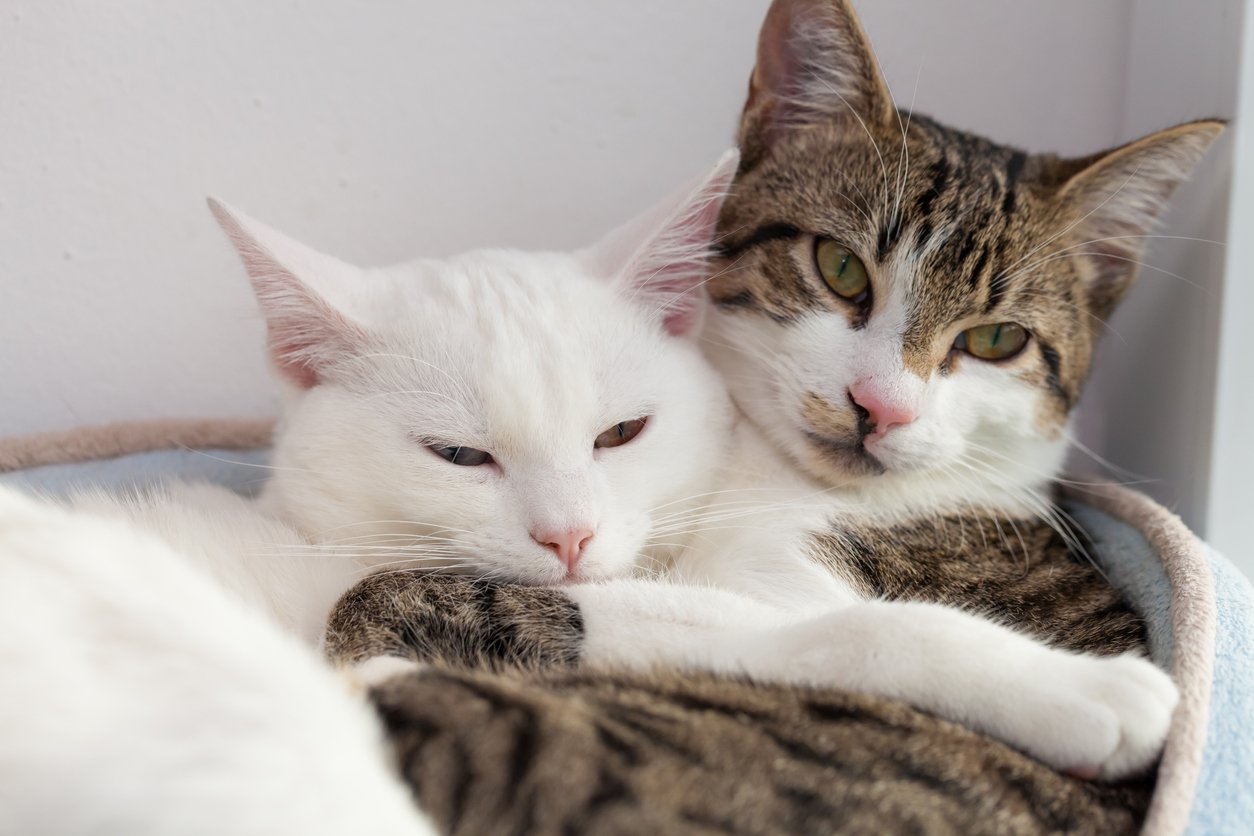

Cat Supplements
Sections
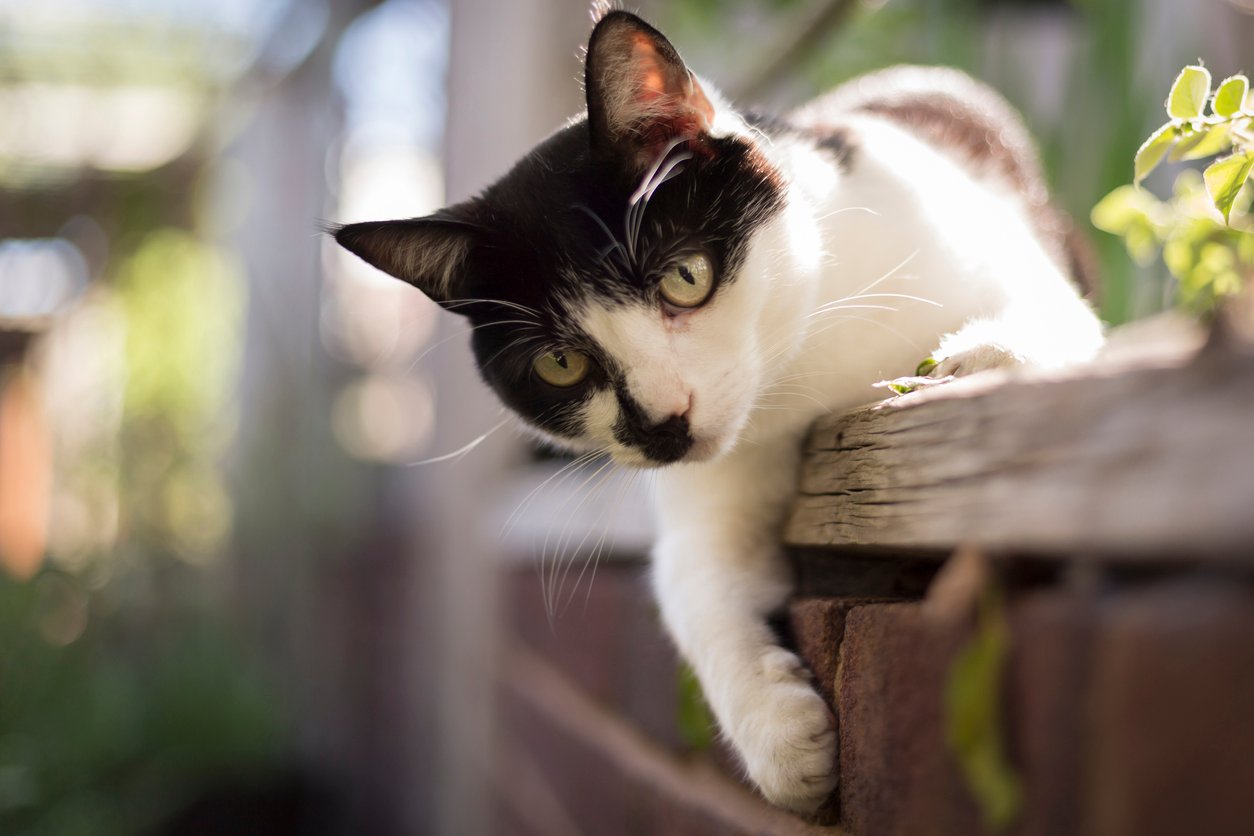
Ultimate Guide to Finding the Best Cat Supplements
Have you ever taken a multivitamin?
We bet you have!
But have you ever thought about incorporating cat supplements into your kitty’s diet?
If you’re hoping your cat would start feline a little better or is just missing that pep in their paw they once had, supplements for cats might be the purr-fect solution.
In this ultimate guide, we break down everything you need to know about maintaining good overall cat health, including supporting common cat health problems with the right cat supplements, and how a cat supplement can improve your cat’s quality of life from kittenhood to their golden years. Plus, we’ll share the best cat supplements on the market so you can feel good about your choices.
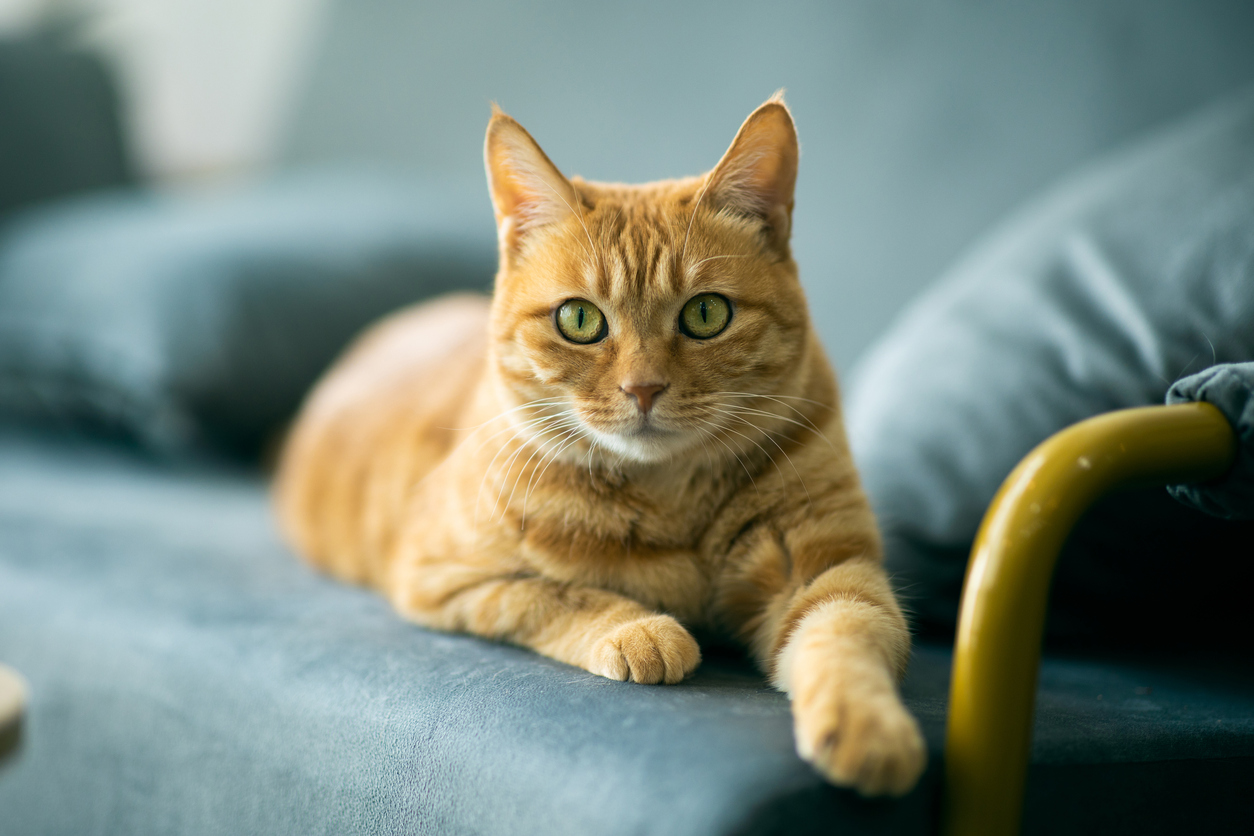
Overview of General Cat Health
Cats are fun-loving, adventurous little creatures. They love exploring the world around them, but sometimes, it can land them in a bit of a pickle.
Cat health can be put at risk by simple activities like a slip and fall from their favourite spot on the top of the bookshelf to coming in contact with hazards in their environment, to the wear and tear their bodies experience as they age.
For cats to live long and healthy lives, they need your love and attention, routine vet visits, and good preventative care.
One of the best things any cat parent can do for better cat health is to know about common cat health issues and how to prevent them. This way, you can protect your sweet feline's health in the best possible way and ensure they can keep exploring and getting into mischief for years to come.
Cat Bones
Good cat health relies on a solid foundation. In this case, your cat’s bones are that foundation.
Before we get any further, let’s make sure we are all on the same page and learn a bit of cat anatomy.
The diagram below shows the anatomy of a cat’s skeletal system.
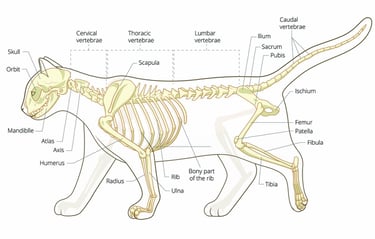
Cats have skeletons that aren't so different from humans. Cats have more bones than humans (230 as opposed to 206), but many bones are the same as those in humans.
There are five distinct parts of the cat bones anatomy:
- Spinal column
- Skull
- Ribs and thorax
- Forelegs
- Hind legs
Each part of cat bones anatomy is essential in and of itself, but when you look at their skeleton as a whole, you can see how these interconnected systems work together to make your cat move.
The table below shows some of the vital cat bones in the body and how they work as part of the cat’s overall skeletal structure.
|
Component of Cat Skeleton |
Description |
|
Spinal Column |
Is comprised of five regions containing the neck, spine, and back vertebrae. This critical part of the skeleton is the foundation of function and movement for a cat. It extends from the base of their skull to the tip of their tail. |
|
Skull |
Cat skulls are attached to the spinal column and consist of many small parts fused to make a solid container for their brains. The skull also houses an adult cat’s 30 teeth. |
|
Ribs |
Cats have 13 pairs of ribs attached to the thoracic vertebrae at the top and the breastbone at the bottom. In conjunction with the spine and sternum, they make up the thorax which contains the heart and lungs. |
|
Forelegs |
The cat leg bones in the front or foreleg include:
These bones are all critical to a cat’s ability to move. |
|
Hind Legs |
The hind leg bones include:
A cat's ability to move relies on all of these bones. |
Cat Spine
Cats have extremely flexible spines, in fact, some of the most flexible in the mammal world! These are part of what makes them slinky and nimble adventurers. This important part of your cat's body extends from the base of their skull to the tip of their tail.
A cat spine is made up of five regions:
- Cervical
- Thoracic
- Lumbar
- Sacral
- Caudal
Working from the head towards the tail, the cervical or neck area is the first stop on this anatomical journey.
The first two cervical vertebrae in a cat have notable names:
- The atlas
- The axis
On the other side of the neck, the thoracic region (chest) has 13 vertebrae, each with a pair of ribs attached. Below the chest is the lower back. There are seven vertebrae in the lumbar region, ending at the pelvis. Three sacral vertebrae join together to form the pelvis.
Last but not least, cats' tails usually have 18 to 23 caudal vertebrae, depending on how long they are.
Supporting Your Cat’s Bone Health
Cat bones are complex — and they have a lot of them! Keeping your cat’s bones in tip-top condition is essential to help avoid common issues like arthritis later in life.
One of the ways that you can support your cat’s bone health is by giving them cat supplements formulated for joint and bone health. TRI-ACTA is a great choice for general preventative health, as it contains only active ingredients with no fillers or additives. Glucosamine for cats and chondroitin lubricates your cat’s joints and provides support for their cartilage (cushion for your cat’s bones). Methylsulfonylmethane (MSM) is a natural anti-inflammatory, helping to give your cat pain relief for aching or inflamed joints.
You can start giving your cat TRI-ACTA at any point in their life — from kittenhood to adulthood!
TRI-ACTA for Pets
A proactive approach for developing and younger adult pets to maintain optimal joint health mobility, minimize inflammation and fend off age-related ailments.
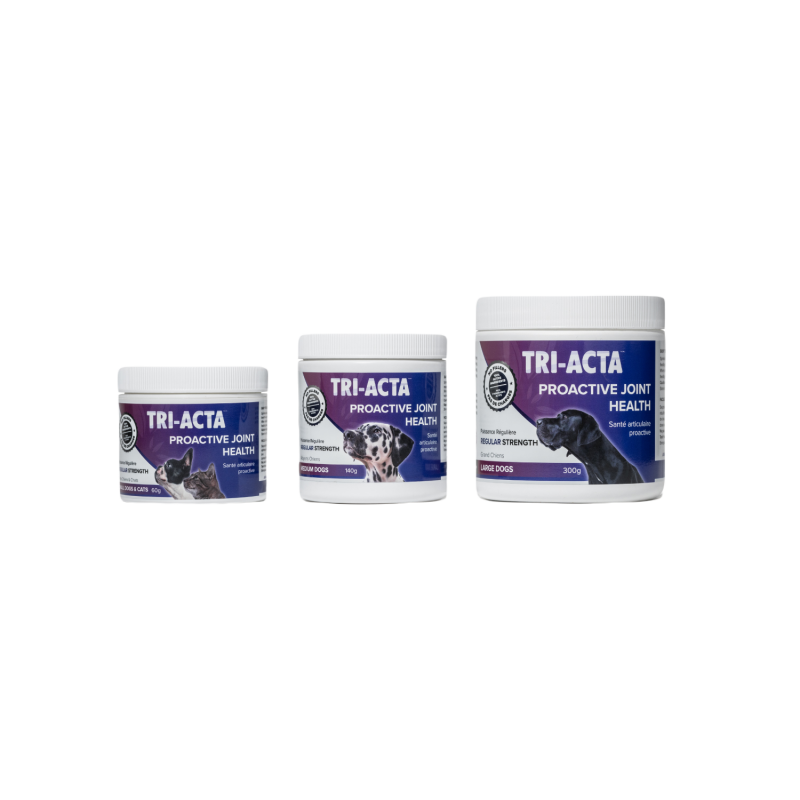
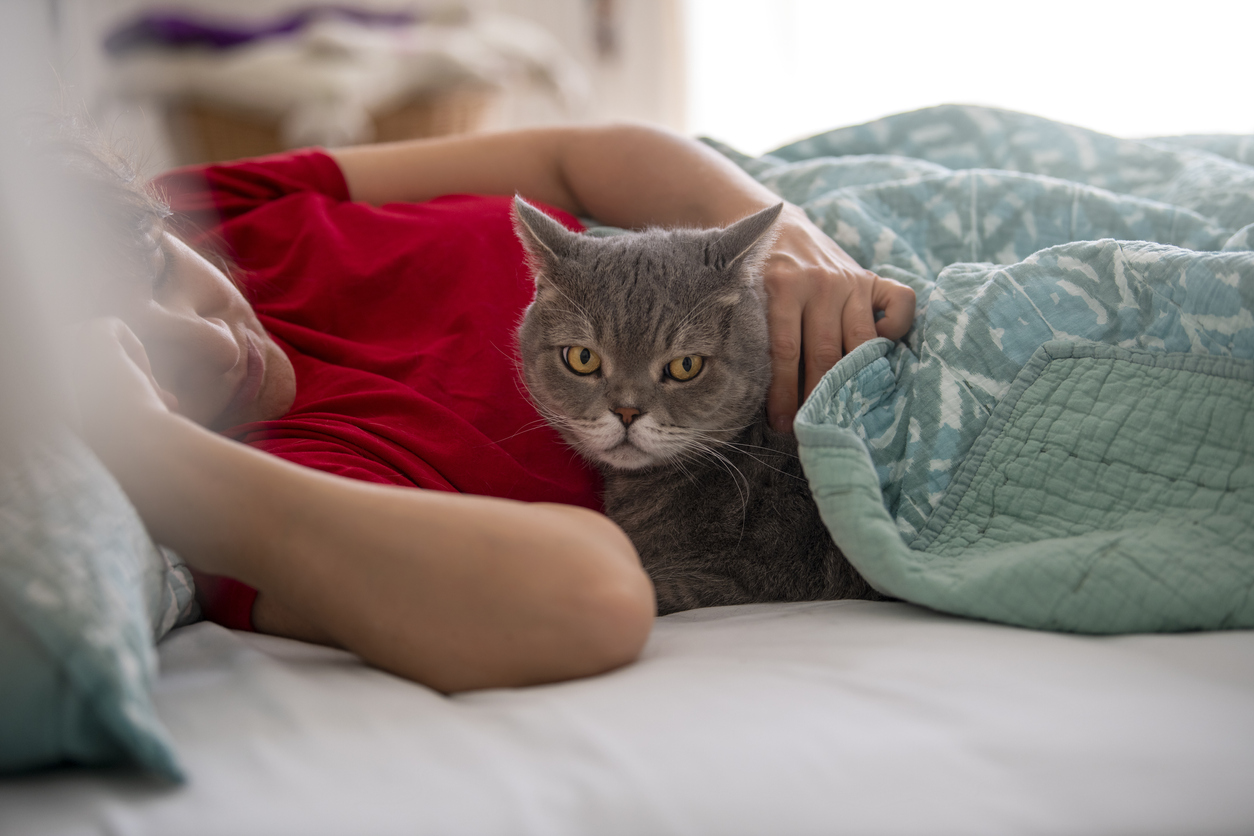
Common Cat Health Problems
Cats can be purr-ticular in more ways than one! From being quite the food critics when we introduce a new food to rejecting a perfectly fine cat bed in favour of our keyboards.
Due to the sensitivity of their bodies and digestive systems, they simply react more dramatically to dietary and other changes than dogs or us humans typically do and can require special attention to manage.
Because of this, it is crucial to learn how to prevent common cat health issues — it's how we can keep them healthy and avoid having our cats in pain.
The problems we’ll be discussing today include:
- Cat limping
- Cat leg injury
- Cat tail injury
- Cat infections
- Swollen cat paws
- Cat arthritis
- Cat joint pain
- Luxating patella in cats
Cat Limping
Cats are creatures who do not often show their feelings, so if your cat is limping, it could indicate something is wrong. A cat might limp for many reasons, all of which can worry a good cat owner like you.
Lameness, or cat limping, can look like:
- Placing no weight on the affected area or holding the paw off the ground
- Muscle loss in the affected area
- Licking an area excessively
- Joint swelling
- Slowing down
- Hesitant to jump or get up from a seated position
- Grooming inconsistency
You should contact your vet if you notice any of these signs and schedule an appointment to investigate the symptoms of your cat limping.
But you may be asking, “why is my cat limping”? Because there are many reasons for your cat limping, we've outlined the most common causes for limping in cats in the table below.
|
Cat Limping Cause |
Treatment |
Prevention |
|
Foreign object in paw |
|
|
|
Sprains, Dislocations, Strains, and Broken Bones |
|
|
|
Infection |
|
|
|
Genetic conditions (Hip dysplasia, musculoskeletal disorders, myopathies) |
|
|
|
Immune Diseases (Bone cancer or feline calicivirus) |
|
|
Cat Leg Injury
There's no surprise that many people are curious whether a cat sprained leg is common since our kitties can't always land on their feet. Even though cats are so graceful and agile, they can still injure their leg muscles and ligaments.
Sprains occur when a ligament stretches beyond its limits. During overextension, the ligament stretches too far, causing it to pull or even tear, which results in pain and inflammation.
You will often notice your cat is limping as the first sign of a cat leg injury.
Other cat sprained leg symptoms include:
- Having a difficult time walking, jumping, or climbing
- Favouring one leg over another
- The injured leg is swollen
- Personality changes
- Appetite changes
- Panting
Meowing more than normal, or crying.
The level of attention that your kitty needs from the vet will depend on the severity of the injury. That's why there is a grading scale for the severity of these injuries.
The three grades of cat leg sprains are:
- Grade 1: The ligament is partially torn, and some swelling and pain occur.
- Grade 2: The cat can't comfortably stand on their leg due to a partially torn or greatly stretched ligament and swelling.
- Grade 3: The ligament is completely torn, and the affected bones are no longer connected by it. A cat in this condition will require surgery.
In the event of a Grade 1 sprain, your cat will likely recover independently without too much discomfort. However, if your cat experiences a Grade 2 or 3 sprain (a more moderate to severe sprain), they'll be in a lot of pain, and you'll need to get them to the veterinarian immediately. If the ligament or tendon injury is fully torn, it may require surgery to be corrected.
Cat Tail Injury
Cats’ tails help them balance and show emotion, so when their tail gets injured, it can be a serious impairment for your feline friend. However, spotting a cat tail injury can sometimes not be the easiest thing to do. Some cat tail injuries may be hidden from view because they occurred under the skin.
Some signs and symptoms of cat tail injury to look for include:
- Tail inactivity and lack of movement
- Discomfort moving the tail
- Uncharacteristic aggression or fear when the tail is approached or touched
- Difficulty urinating or defecating
- Bleeding
- Hair loss
Cat tail pull injuries, also called tail avulsion, is so common with cats that it’s secondary only to household accidents (the ones involving a door, fence, or car). If you take a look at the cat skeleton image we presented earlier in this article, you can see that a cat’s tail has a number of vertebrae. A cat tail injury can occur when any of these vertebrae are fractured, lacerated, or have their connections to tissue removed. A cat tail injury can also involve the degloving of the skin at any point on the tail.
Cat Infections
Like any other animal, cats can suffer from a wide variety of infections. Minor infections can quickly develop into more severe cases if your kitty isn’t provided with adequate treatment. Part of being able to provide quick and effective treatment for cat infections involves recognizing the signs and symptoms that indicate your cat may be suffering from an infection.
The table below outlines some common types of cat infections and how you can recognize and treat them:
|
Type of infection |
Signs and Symptoms |
Treatment(s) |
|
Cat Eye Infection |
|
|
|
Cat Yeast Ear Infection |
|
|
|
Cat Paw Infection (pododermatitis) |
|
|
Swollen Cat Paw
Due to our cats' propensity for getting into precarious situations, we must know how to protect them from painful situations like a swollen cat paw. Whether it's caused by sudden trauma or more chronic conditions, it's essential to be aware of the symptoms and how to handle them.
You probably wouldn't be surprised to know that the first sign there's a paws-ibility of a paw injury is a swollen cat paw.
Other symptoms there's something up with a swollen cat paw include:
- Lameness or limping
- Limited mobility and activity
- Foul-smelling paw discharge
- Hot paws
- Weak appetite
- Constantly licking or biting the paws
When a cat has swollen paws, it’s not uncommon and can be caused by a myriad of things. The table below outlines what may be causing a swollen paw cat.
|
Cat Swollen Paw Cause |
Description |
|
Environmental or Food Allergies |
|
|
Acute Trauma (Cuts, abrasions, and scrapes) |
|
|
Nail Problems |
|
|
Infections |
|
Call your vet if you see any of these symptoms. Likewise, if you see your kitty in the midst of an injury, such as a fall from an elevated space, or a fight with another cat, you should call your vet for advice on what to do.
Cat Arthritis
Cat arthritis can be difficult to diagnose, like many other conditions. It begins slowly, but especially for our indoor cats, who can live as long as 13 to 17 years, it's essential to manage the symptoms and make their golden years as comfortable as possible.
Arthritis is a condition commonly developed by aging cats or felines who have been injured. Degenerative joint disease and osteoarthritis are other names for arthritis you may come across. This condition is also very prevalent and affects 90 percent of cats over 12. Cats develop arthritis due to the degradation and deterioration of the cartilage in their joints. This is a problem because cartilage acts as a soft, cushiony barrier that prevents bones from rubbing against each other. Prolonged rubbing of the bones leads to pain and inflammation. No fun!
There are several reasons for cat arthritis:
- Natural wear and tear of joints
- Genetics
- Previous injuries
Watching for the signs of cat arthritis and getting on top of prevention is the best way to stop your kitty from experiencing the painful ramifications of cat arthritis.
Common signs your kitty is experiencing cat arthritis include:
- Refusing to be touched or petted
- Biting, scratching, and hissing more frequently
- More sleeping than usual
- Lameness or limping
- Inability to stand up as quickly as normal
- Running or walking more slowly than usual
- Changes in gait
- Grooming changes
Adding nutritional cat supplements to your cat's diet, such as joint supplements, can help maintain their overall health and slow the progression of arthritis.
Cat joint supplements include several key ingredients that specifically support your cat's joint health. These key ingredients include:
- Glucosamine for cats: Rebuilds cartilage lost to aging
- Chondroitin: Prevents cartilage deterioration
- MSM: Reduces inflammation
Generally, you should choose a supplement that contains all active ingredients (or as little filler as possible).
But which supplement gives you all that and more? TRI-ACTA.
Besides the active ingredients listed above, this supplement does not contain any fillers, and it's third-party batch tested to ensure only the best quality for your sweet furball.
TRI-ACTA for Pets
A proactive approach for developing and younger adult pets to maintain optimal joint health mobility, minimize inflammation and fend off age-related ailments.

Cat Joint Pain
Apart from arthritis, cat joint pain can be attributed to several causes:
- Genetic or hereditary factors (hip or elbow dysplasia, luxating patellas)
- Broken bones
- Sprains
- Ligament tears
- Ligament strains
A vet should be consulted in cases where you suspect the above to prevent further damage to the joint that may result in inflammation and scarring.
Of course, the best thing you can do is work on prevention to avoid cat joint pain.
The table below outlines ways to mitigate cat joint pain and get some cat joint pain relief.
|
Cat Joint Pain Relief & Prevention |
Description |
|
Weight Management |
Overweight cats are more likely to experience joint pain. Excess body fat puts extra pressure on their weight-bearing joints. Avoid this stress by exercising, switching to diet food, and reducing treats between meals. |
|
Add a Cat Hip and Joint Supplement |
Due to a lack of cartilage, the bones in your cat's joints rub together and cause inflammation. Adding a supplement like Integricare's TRI-ACTA helps a cat's joint by supplying key joint ingredients like glucosamine, chondroitin, and MSM that improve joint health and reduce pain and inflammation. |
|
Alternative Therapies |
Alternative treatments such as hydrotherapy and therapeutic massage may help relieve the discomfort associated with cat joint pain, increase circulation, and alleviate pressure on their joints. |
|
Modifications at Home |
As your cat ages, creating accessibility changes can help ease their daily routine. Changes could include adding a low-sided litter box or ramps to your bed or couch, so your cat can easily reach their favourite spots. |
Luxating Patella Cat
The knee joint is what lets a cat crouch, jump, and pounce.
One of the most essential components of the knee is the patella, and luxation refers to being out of place. A luxating patella cat is when the kneecap slips out of place and to the side due to an improperly developed stifle.
Though patellar luxation seems to be inherited in certain breeds, such as Burmese cats, developmental problems in joints have complex inheritance patterns. There is no way to guarantee your cat won't experience this condition.
There are four grades of luxating patella in cats, and a higher degree means that the condition is more severe:
- Grade I: The patella can be luxated out of the groove by applying pressure to it, but it returns to its original position as soon as the pressure is released
- Grade II: Occasionally, the patella will pop out on its own; it will remain out until the leg is hyperextended and rotated, allowing it to return to its groove
- Grade III: A majority of the time, the patella is out of the groove, but it can be pushed back in manually
- Grade IV: The patella has come out of its groove permanently and can't be repositioned manually
When a cat has a luxating patella, signs of pain and abnormality may appear gradually. Once the cat is older, the condition can progress to lameness.
Symptoms of luxating patella cat problems include:
- Periods of lameness (on and off)
- Unusual 'skipping' motion on the affected leg when the cat walks or runs
- Unusual trouble jumping
- Holding leg out to one side
An X-ray taken at the time of spay or neutering is a good way to detect a luxating patella early on and provide effective treatment.
Your cat might not need much treatment, depending on how severe the problem is. However, surgery may be needed to realign the kneecap and keep it from popping out in more severe grades and where both knees are affected.
The surgery aims to stabilize the patella so it tracks correctly in the trochlea, and your cat can have normal mobility and free exercise. After a surgery like this, help your cat recover easily by adding a joint supplement to their diet.
Integricare's TRI-ACTA H.A. allows you to boost cartilage repair, reduce inflammation, and improve mobility by adding hyaluronic acid. This ingredient provides additional lubrication to your cat’s joints, which is essential for older cats or cats recovering from surgery.
TRI-ACTA H.A. for Pets
Our maximum strength formula is optimally designed to accelerate the formation of cartilage, minimize inflammation, expedite the healing process, and improve joint conditions.

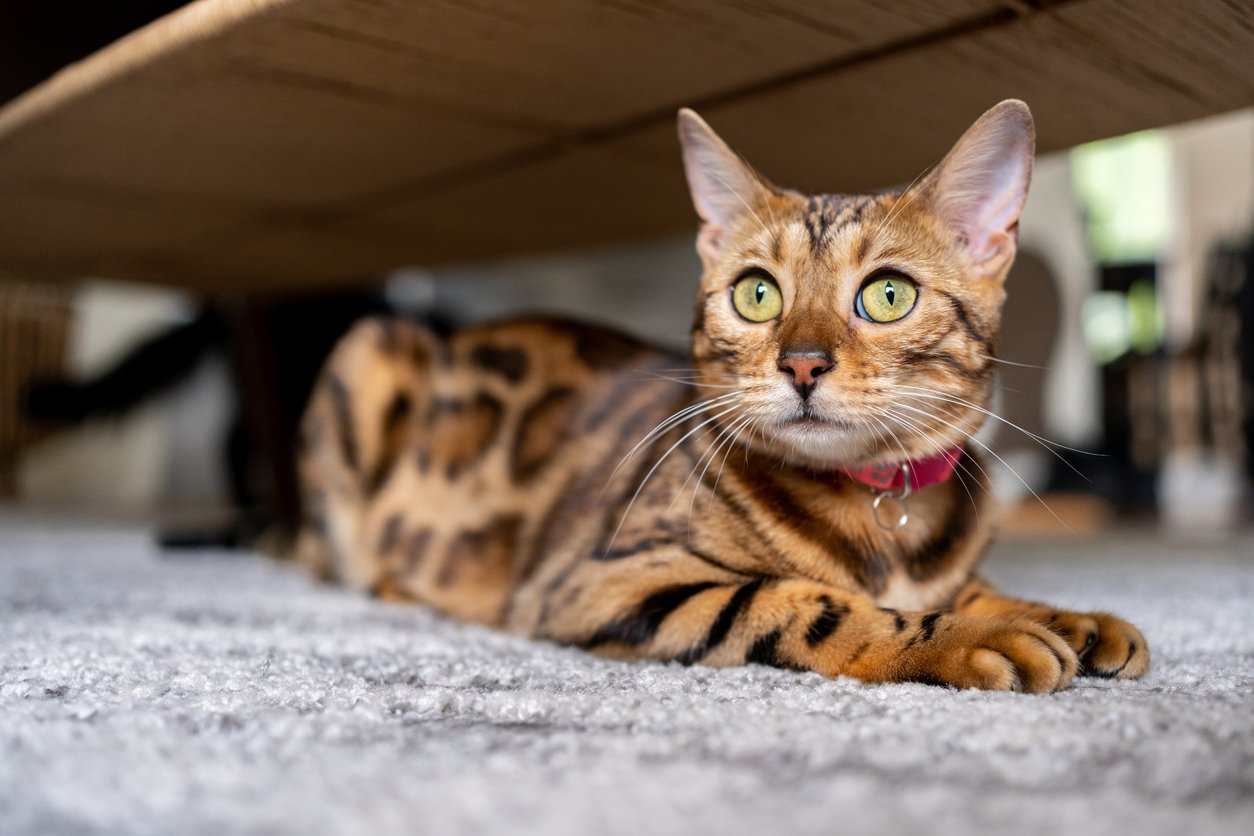
Cat Breed-Specific Health Concerns
Special breeds have a special place in our hearts — but they also need specialized support and care to address their unique needs.
Felines with cat breed-specific health concerns we will cover today include:
- Munchkin cats
- Bengal cats
- Persian cats
- Siamese cats
Munchkin Cat Health Problems
Beloved for their adorably stubby little legs, munchkin cats have only been recognized as a breed in the last few decades, with some organizations still refusing to recognize their breed. That’s because of the genetic mutation that results in the short legs of these cats.
Munchkins may be more likely to develop certain health problems, and there is ethical debate about breeding these cats for that reason. So it’s especially important to take good care of these kitties’ special health concerns as soon as they enter your life.
Some of these common Munchkin cat health problems are outlined in the table below.
|
Common Munchkin Cat Health Problems |
What It Is |
|
Hyperthyroidism |
Cats with hyperthyroidism produce too many hormones when their thyroids go haywire. Health problems such as this can lead to weight loss, increased appetite, and thirst, but they can usually be treated easily, so it's not too much to worry about. |
|
Osteoarthritis |
Degenerative joint disease causes your cat's cartilage to wear away, resulting in pain and discomfort. By giving your cat a joint supplement, such as TRI-ACTA or TRI-ACTA H.A., you can help maintain joint health and reduce pain. |
|
Spinal problems |
Lordosis is a common condition for munchkins, and it is what happens when the spine muscles are too short. This results in a curved spine. The state can range in severity and sometimes requires surgery. Lordosis is notoriously difficult to treat and can often result in death during or shortly after birth or through euthanasia. |
|
Uremia |
Normally, your cat's metabolic waste gets filtered out through urine, but sometimes it gets concentrated in their blood along with proteins and amino acids. It can cause seizures and cardiac arrest and may even prove fatal to your cat. |
|
Pectus excavatum |
The condition causes hollowed-out chests in cats and Munchkins, especially males. Because the chest is concave, the pectus excavatum affects how well the heart functions in your cat. Through a physical exam or CT scan, veterinarians can often detect this condition at birth, though it can develop later. |
Bengal Cat Health Issues
Created by crossing the domestic shorthair cat with the wild Asian leopard cat, the Bengal cat is a newly established hybrid cat breed. They have a friendly, curious demeanour and some unique fur patterns. They love to play, explore, and communicate with their owners — often loudly!
Sadly, Bengals also have hereditary health problems, especially if you're not careful who you buy them from.
Common Bengal cat health issues include:
- Cataracts: Clouding of the eye's lens due to changes in proteins and lens fibres, which interferes with your cat's ability to focus light properly, resulting in blurry vision.
- Progressive retinal atrophy (PRA): A group of degenerative diseases affecting the eye's photoreceptor cells. Affected cats eventually become blind due to the deterioration of the light-sensitive layer of cells at the back of their eyes.
- Hypertrophic cardiomyopathy (HCM): This condition causes the muscle walls of a cat's heart to thicken, reducing the heart's efficiency and sometimes causing symptoms elsewhere in the body. Left untreated, it can cause congestive heart failure and blood clots in the heart.
Choosing a reputable breeder to work with and ensuring you keep on top of vet visits are crucial to protecting your kitty from Bengal cat health problems.
Persian Cat Health Issues
Persian cats are beautiful, recognizable, and loved the world over.
But unfortunately, these sweet guys are also susceptible to breed-specific health problems.
Common Persian cat health issues include:
- Haircoat disorders
- Overgrown nails
- Dental disease
- Eye discharge
One of the most identifiable features of a Persian cat is its sweet flat face. This is known as a brachycephalic head, which means the head shape is abnormally short and round. Researchers have found that this head shape is much of the reason Persian cats experience the conditions we listed above. Their unique head shapes make dental problems and eye issues commonplace. Persians' hair problems are often caused by their thick, long coats, which are more prone to matting and tangling.
To take good care of your Persian cat and to prevent Persian cat health issues, you need to be especially alert to dental, eye, and haircoat issues and seek treatment at the first sign of illness.
Siamese Cat Health Issues
If you're the proud parent of a Siamese cat, you know just how intelligent, energetic, and vocal these little guys are, and how they can need — ahem — demand plenty of attention. As one of the oldest cat breeds in the world, Siamese cats have been and remain popular family pets.
They also are known to have a few breed-specific health challenges you should be aware of as a current or prospective Siamese cat owner.
Generally, Siamese cat health issues include:
- Mouth and gum diseases
- Heart disease
- Liver disease and pancreatitis
- Gastrointestinal troubles
- Kidney disease
The best way to keep your Siamese cat health problems in check is to make regular vet visits, and ensure they are getting a balanced diet and healthy lifestyle. A cat joint supplement like TRI-ACTA is a great complement to a healthy lifestyle and can help all cats, including Siamese cats, live happy, healthy lives.
TRI-ACTA for Pets
A proactive approach for developing and younger adult pets to maintain optimal joint health mobility, minimize inflammation and fend off age-related ailments.

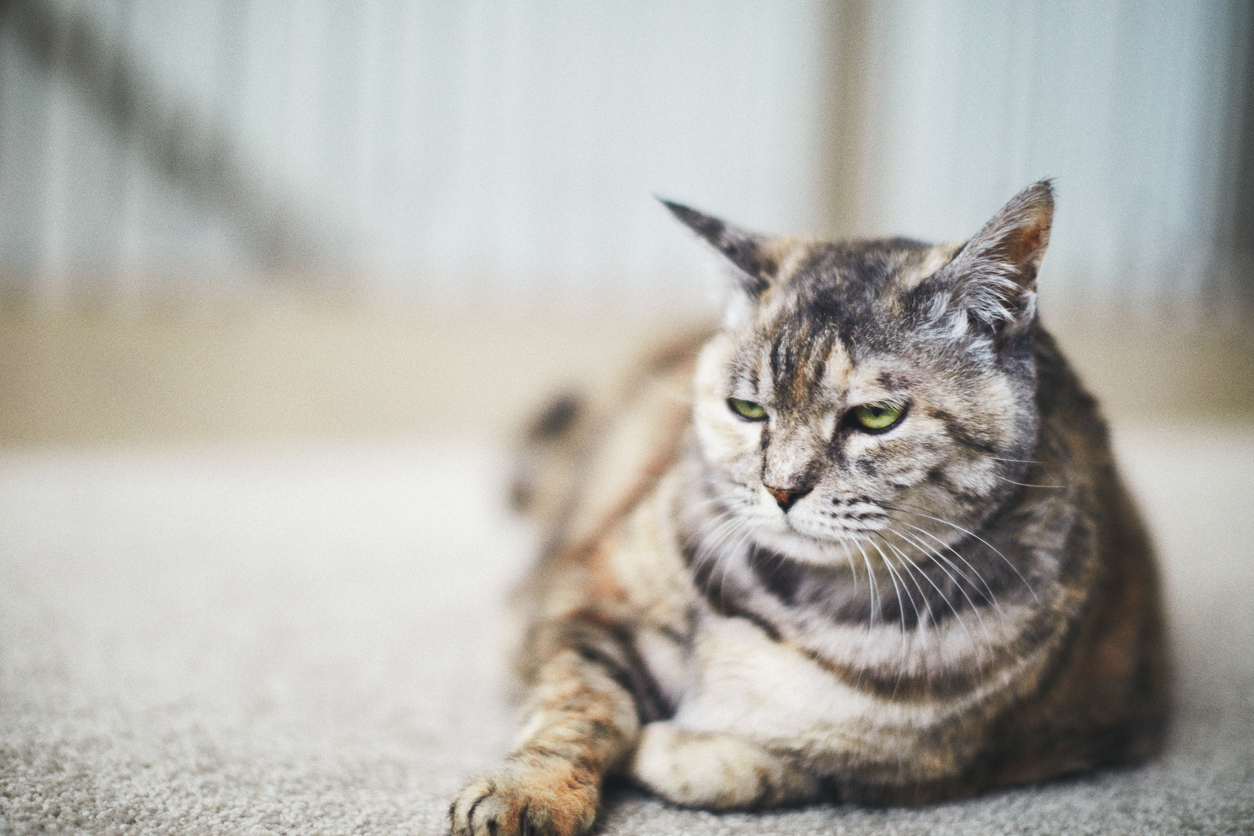
What Can You Give A Cat For Pain?
Unlike a human, a cat can’t exactly tell you when they aren’t feeling their best. In fact, these little furballs can be notoriously elusive about their feelings, and it can be hard to tell when you have a cat in pain.
In the end, you will likely ask yourself, “what can you give a cat for pain?” at one point or another in your cat’s life, so it’s best to be prepared and know what to do when you do determine your sweet kitty isn’t feline so good.
Cat Supplement
The first thing that can help a cat in pain is cat supplements. Joint supplements specifically are excellent preventative cat pain measures, but they can also help provide cat pain relief at the moment, whether an injury, arthritis or other conditions cause it. A cat joint supplement helps with pain that results from unpleasant situations like these by building healthy soft tissues and joints and repairing damaged cartilage. Cartilage can degrade thanks to arthritis and injury.
A Cat joint supplement can offer your kitty the benefit of:
- Repairing already damaged cartilage
- Preventing further cartilage deterioration
- Reducing pain and inflammation in the joints
- Improving lubrication in the joints by thickening the synovial fluid for better mobility
Whether you're providing a cat joint supplement or considering another type of cat supplement like a nutritional cat supplement, you should remember to look for an option that has as few fillers as possible, ideally zero. You should also look for a reputable company like Integricare, which has offered customers high-quality, third-party batch-tested products for over two decades.
TRI-ACTA H.A. for Pets
Our maximum strength formula is optimally designed to accelerate the formation of cartilage, minimize inflammation, expedite the healing process, and improve joint conditions.

NSAIDs and Medication
When humans have an ache or pain, we often turn to over-the-counter medicines like NSAIDs to take care of it. Cats have their own NSAIDs that can do the same job — but they aren't OTC.
Cat pain medicines are only available from your vet as a prescription. It's important to remember not to feed any human NSAIDs to your cat in pain as they could do much more harm to your kitty than good.
NSAIDs can help reduce the pain your cat is experiencing and help get them back to their old selves. Just remember that your cat may experience negative side effects from using an NSAID, such as:
- Vomiting
- Inactivity (more than normal)
- Nauseousness
You should immediately contact your veterinarian if you notice any of these side effects in your cat.
Alternative Therapies
Sometimes, a cat in pain must try something unique to help its symptoms.
Thankfully, there are many options to help treat your cat in pain with alternative care from various accredited professionals.
The chart below shows how alternative practices may benefit your cat in pain.
|
Alternative Cat in Pain Relief |
What It Is |
|
Feline Massage |
Soft tissue manipulation uses various holding, moving, and applying pressure techniques to reduce a cat’s pain. |
|
Physical Therapy |
Stresses the importance of movement and optimizing the physical potential for cats' health and well-being and in injury recovery., Typical sessions include stretching, joint manipulations, and special exercises. |
|
Hydrotherapy |
Warm water physiotherapies, such as swimming in a pool with a harness or using an underwater treadmill to build strength, flexibility, and endurance while minimizing stress on bones, joints, and organs. |
|
Acupuncture |
The nervous system is stimulated with very fine needles inserted at specific points on the body during acupuncture. Various health problems in cats can be treated with acupuncture. |
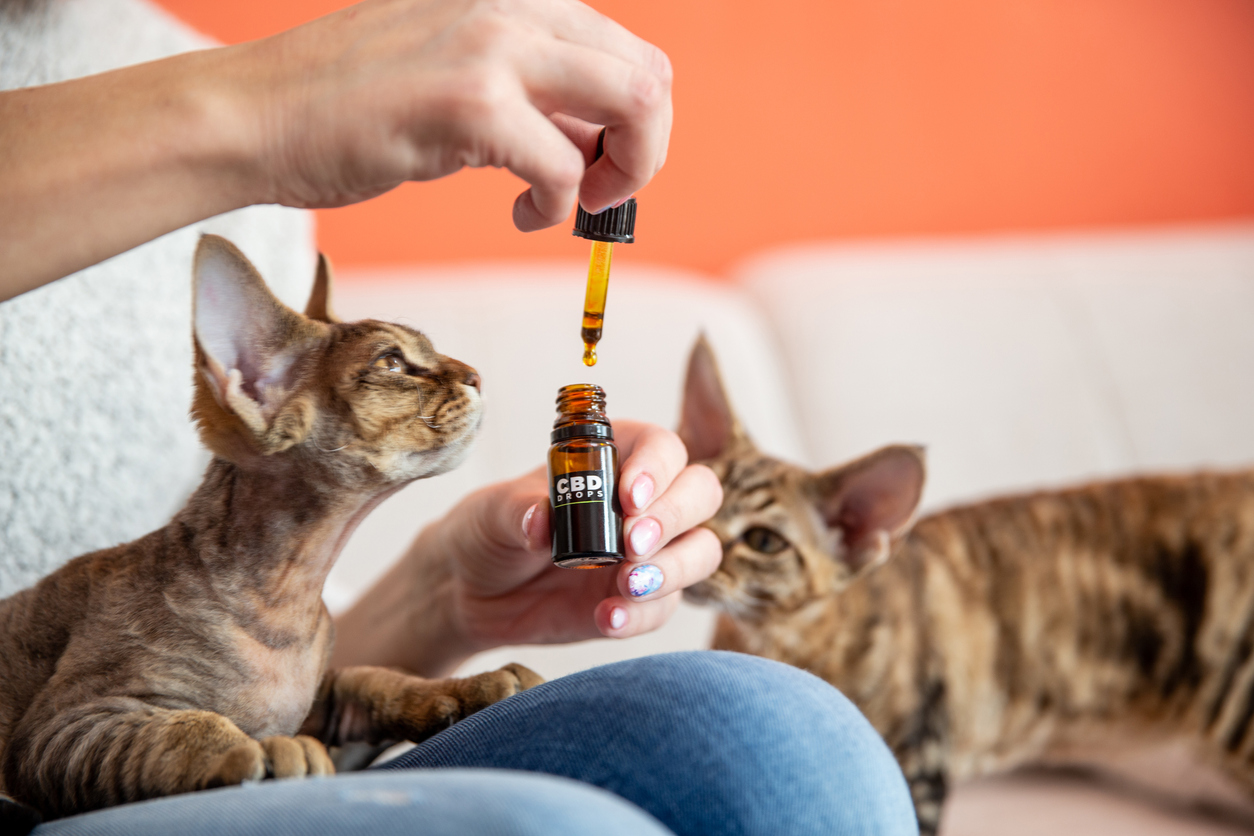
Types of Cat Supplements
You’re trying to find cat supplements and have your eye on one or two that might work well.
But you want to find supplements that are purr-fect for your cat. After all, you only want what is best for your sweet feline.
We’re going to break down a few popular types of supplements for cats so that you can find the perfect type of cat supplement for your own furry family member.
Nutritional Supplements for Cats
Just like humans, cats need certain nutrients, like vitamins and minerals, to maintain optimal animal health.
If your cat is deficient in certain nutrients, you may start to notice negative conditions affecting your cat’s health, ranging from something as benign as flaking skin to something more serious, like kidney failure.
Some vitamins and minerals that are key to your cat’s health are listed in the table below.
|
Vitamin or Mineral |
Benefit to Your Cat |
|
Taurine |
|
|
Thiamine |
|
|
Vitamin D |
|
|
Vitamin A |
|
|
Niacin |
|
Fortunately, cat arthritis supplements can provide some of these vitamins and minerals.
So if your cat happens to be suffering from a nutrient deficiency, you should chat with your vet about how supplementation can help bring her body to a healthy place.
Fish Oil for Cats
Fish oil for cats can help your kitty to get feline their best!
This supplement contains omega-3 fatty acids, an essential nutrient for supporting the structure and function of cell membranes in your cat’s body, helping to supply energy. In addition, the omega-3s in fish oil for cats also help support your cat’s joint health.
It's no surprise that fish oil supplements for cats are derived from fish. Fish oil is found in cold-water fish like mackerel and trout, but you can also find it in shellfish like mussels and oysters. By eating fish or taking an omega-3 fatty acid supplement, cats can get the benefits of omega-3 fatty acids.
But what exactly are Omega-3s?
In addition to supporting the structure and function of cell membranes, omega-3 fatty acids provide energy to the body. Unfortunately, there is no way to make omega-3 fatty acids in a cat's body, so they have to get them from food. That's why some pet owners choose to feed fish oil supplements to cats.
Other benefits of fish oil supplements for cats include:
- Improved skin and coat health and condition
- Improved joint health and condition
- Immunity support
- Supports healthy brain function for cats of all ages
Cat Probiotics
Sometimes cats can have digestive issues due to an imbalance in their gut flora. Microorganisms in your cat’s gut can get out of whack, meaning that the balance of healthy gut bacteria shifts, so more unhealthy bacteria are present. When this happens, your kitty can experience nausea, vomiting, diarrhea, and other stomach issues.
Cat probiotics help sort out the microbiome of your cat’s stomach and intestines so that they feel better. There are a variety of natural cat probiotics you can feed your feline:
- Sugar-free natural yogurt
- Kefir
- Sauerkraut
You can also offer probiotic cat supplements as a pill or powder. Powders are usually easier to administer because they can be sprinkled on top of food, but pills provide a more direct and consistent dosage.
The benefits of cat probiotics include:
- Promotes healthy digestion
- Strengthens immune system
- Can help reduce inflammation
- Helps prevent allergies
- Decreases local pH, which can help prevent bad bacteria from developing
Joint Supplements for Cats
It’s no secret that cat joint supplements are our favourite type of supplement.
From helping to prevent or treat cat arthritis improving an older cat’s mobility, to simply maintaining overall joint health: joint supplements are where it’s at.
But there is a caveat.
Not all joint supplements are created equal. Some are made of mostly filler or don’t include important active ingredients. This is especially unhelpful if your cat is overweight.
So when choosing a joint supplement, particularly a cat arthritis supplement or a fat cat supplement to support mobility, you should look for the key active ingredients of glucosamine, chondroitin, MSM, and hyaluronic acid.
The table below outlines the roles of key active ingredients that should be included in your cat’s joint supplement:
|
Active Ingredient |
Benefit to Joints |
|
Glucosamine |
|
|
Chondroitin |
|
|
MSM |
|
|
Hyaluronic Acid |
|
Intrigued? We’ll get into more detail about the benefits of joint supplements a little further on in this post!
Supplements for Older Cats
Getting older can be awesome.
But the loss of mobility that comes with age… Maybe not so much.
As your cat ages, she might start moving just slightly slower than she used to.
Fortunately, joint supplements can help improve overall mobility.
And other mature cat supplements can help as well.
Supplements for senior cats can help improve your kitty’s outlook on developing certain health conditions, such as:
- Diabetes
- Kidney disease
- Obesity
- Senility
- Dental disease
Some of these conditions can make it more difficult for your cat to get all of the nutrients they need, and a cat nutritional supplement can help counteract the symptoms and signs, as well as the secondary challenges created by senior cat conditions.
But always be sure to check with your vet before feeding your cat mature cat supplements. Older kitties are especially sensitive and the last thing you want to do is accidentally make things worse!
Kitten Supplements
Kittens can also benefit from cat supplements, but since kittens are babies with sensitive digestive systems, it’s important to consult your vet before you start feeding them different cat supplements. For example, kittens require more calcium and phosphorus than adult cats, but that doesn’t mean they would benefit from a supplement for these minerals. Excess calcium intake can lead to issues like magnesium deficiency and can result in orthopedic problems in the future, like osteochondrosis.
One safe supplement that you can feed your kitten is TRI-ACTA. The dosage is based on weight, so you’d feed your kitten only 0.5g daily! This joint supplement helps prevent conditions like arthritis and stiffness and helps to maintain collagen, cartilage, and connective tissue.
Because TRI-ACTA is made with ingredients that naturally occur in your kitten’s body, you don’t have to worry about negative side effects. Plus, it’s easy to sprinkle on your kitten’s wet or dry food because it comes in powder.
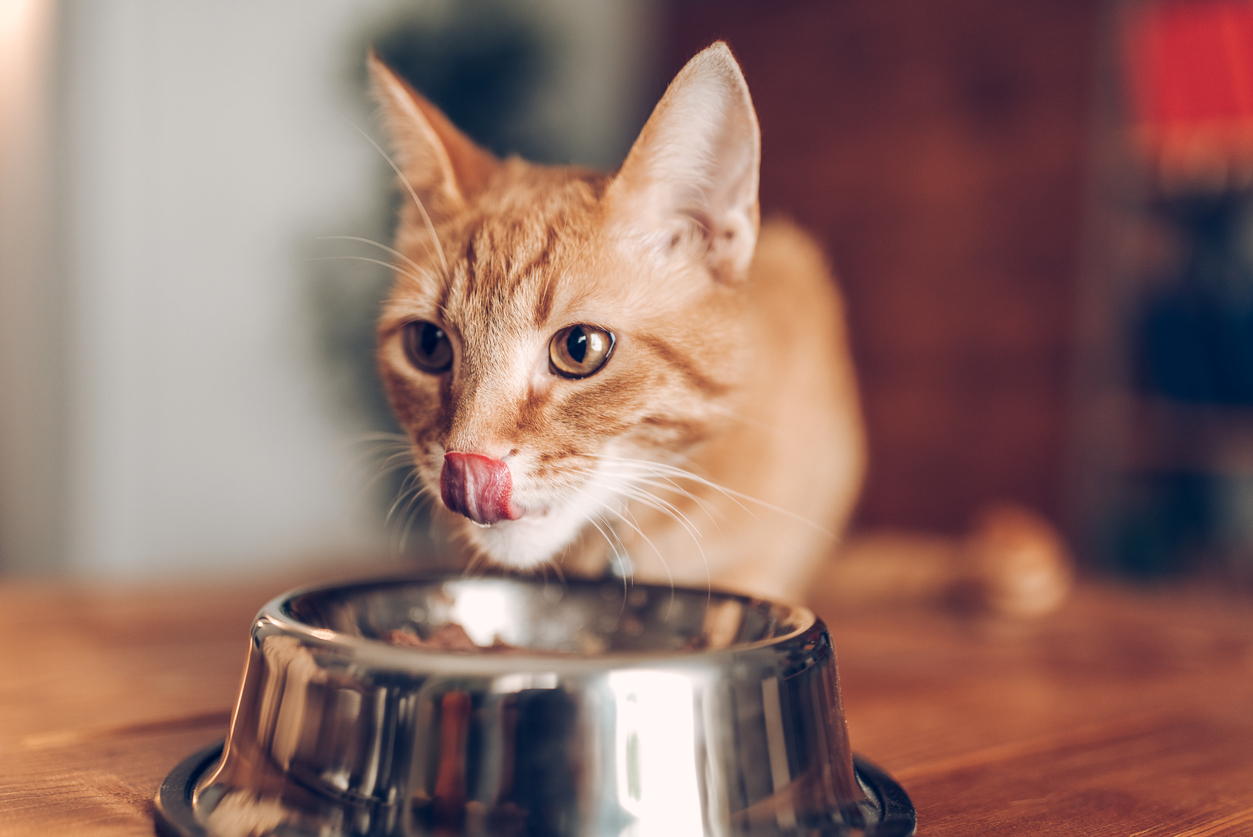
5 Key Benefits of Cat Supplements
There are some seriously awesome benefits of cat supplements, ranging from promoting healthy joints to improving your cat’s digestive system.
To keep it simple, we will cover the five most key benefits of a cat supplement here:
- Promote healthy joints
- Increase immune system health
- Enhance skin and coat health
- Improve digestive system
- Provide omega-3 fatty acids
Time to get into the details now, shall we?
Promote Healthy Joints
Cats are known for their sense of adventure, whether that’s jumping onto too-high bookshelves or hunting a mouse outside.
And to do all this adventuring, they need to maintain healthy joints. Cat supplements help accomplish this.
Studies show that certain active ingredients, in particular, promote joint health:
- Glucosamine: repairs cartilage
- Chondroitin: prevents cartilage deterioration
- MSM: reduces pain and inflammation
- Hyaluronic Acid: helps lubricate joints
You’ll notice we mention cartilage a couple of times up there. So why is it so important to prevent and repair cartilage deterioration?
Well, cartilage cushions your cat’s joints. It’s found on the end of your cat’s bones and helps prevent her bones from rubbing against one another. That means that every time your cat jumps or runs, cartilage protects her from pain or inflammation from the friction of movement.
But unfortunately, when cartilage gets damaged, it can lead to degenerative joint conditions, such as osteoarthritis. And this is important because arthritis is prevalent in cats, especially as they age.
So where do joint supplements come in?
Well, feeding your cat a joint supplement can help prevent cartilage from deteriorating, thus decreasing the possibility she’ll develop conditions like arthritis.
And if your cat already has arthritis, joint supplements can help reduce the pain and inflammation this condition causes. That’s because active ingredients like hyaluronic acid and MSM help reduce pain and inflammation and keep joints lubricated.
We recommend TRI-ACTA for basic joint maintenance, which can help reduce the likelihood of your cat developing degenerative joint conditions. If your cat already has arthritis, it may be best to check out our maximum strength sister product, TRI-ACTA H.A. for pets.
TRI-ACTA H.A. for Pets
Our maximum strength formula is optimally designed to accelerate the formation of cartilage, minimize inflammation, expedite the healing process, and improve joint conditions.

Key Takeaway (TLDR): active ingredients found in cat joint supplements (glucosamine, chondroitin, MSM, and hyaluronic acid) keep your cat mobile.
Increase Immune System Health
Maintaining a healthy immune system is key to enhancing the longevity of your cat’s life. A healthy immune system can keep your cat from getting sick, making enjoying each other’s company all the easier.
Studies show that certain ingredients in cat supplements may improve a cat’s immune system health. These ingredients can help your cat’s body fight infections before they take too strong a hold.
Some of these ingredients are listed below:
- Arginine: an essential amino acid that removes toxic by-products (like ammonia) from your cat’s body.
- Nucleotides: building blocks of DNA and RNA that support cell regeneration.
- L-Lysine: another essential amino acid that encourages the production of enzymes and antibodies.
In particular, L-Lysine is a great option for preventing respiratory illnesses, such as feline herpes. This illness can cause unpleasant symptoms like conjunctivitis, sneezing, lethargy, fever, and loss of appetite.
When choosing a cat supplement, you don’t want to accidentally make matters worse, especially if you already have a sick cat. As such, always be sure to share a conversation with your vet before trying a new cat supplement.
Summary (TLDR): Feeding your cat a supplement can boost your immune system.
Enhance Skin And Coat Health
Have you noticed your cat’s fur has gotten a little less soft and more scratchy? Or maybe they’ve started to shed more than you’re used to?
Sometimes cats can develop problems with their skin and coat, like dull fur or dry skin, when they have a nutritional deficiency, especially in omega-3 fatty acids.
While it’s always best for your cat to get key vitamins and minerals through a balanced and nutritional diet, sometimes you’ve got to rely on a supplement or two.
And cat supplements can really work wonders in preventing some of the skin and coat issues we mentioned above.
If you’re looking for a cat supplement to enhance your cat’s skin and coat health, be sure to look for the following key ingredients:
- Omega-3 fatty acids
- Vitamin A
- Vitamin D
- Biotin
Before moving on to our next point, we have a quick PSA. Please remember that too much Vitamin A or Vitamin D can be poisonous to your cat!
These vitamins are fat-soluble, meaning they build up within your cat’s body over time. This makes it easier to accidentally overload her with these nutrients.
As mentioned, it’s always best to consult with your vet before feeding your cat a new supplement.
Summary (TLDR): Ingredients like Vitamin A, omega-3 fatty acids, and biotin can improve the health of your cat’s dull, dry skin and fur.
Improve Digestive System
If your furry friend has had a few bathroom cat-astrophes recently, looking into a cat supplement that will support her microbiome may be a good idea.
What’s a microbiome, you ask?
Every cat has one.
Your cat’s microbiome comprises microorganisms (read: good bacteria), which benefit your cat’s digestive tract.
These microorganisms are known as probiotics. Additionally, prebiotics can also promote a healthy microbiome.
- Probiotics: microorganisms that support immune and digestive health
- Prebiotics: carbohydrates that benefit the “good bacteria” in your cat’s digestive system
So, given this information, it naturally follows that finding cat supplements with these ingredients can support your cat’s digestive system.
Probiotics and prebiotics may be beneficial if your cat has historically had digestive issues, like diarrhea and vomiting.
When shopping for a supplement, look out for a few strains in particular to maximize the benefits your cat receives:
- Bifidobacterium
- Enterococcus
These two strains are especially beneficial since one lives in the large intestine and the other lives in the small intestine. But of course, the more strains, the better!
Summary (TLDR): The probiotics and prebiotics in some cat supplements provide “good bacteria” that improve and maintain the health of your cat’s digestive tract.
Provide Omega-3 Fatty Acids
We all know how much cats love fish.
Not only is it a tasty treat for kitties, but fish also provides a vital nutrient to cats: omega-3 fatty acids.
We mentioned omega-3 fatty acids a little earlier when discussing how this nutrient can benefit your cat’s skin and coat health.
But that’s just one of their many awesome benefits.
So, what are omega-3 fatty acids anyway?
Well, it’s all in the name. Omega-3 fatty acids are fats essential to your cat's health.
Omega-3’s maintain your cat’s health by:
- Promoting skin and coat health
- Reducing inflammation
- Providing energy
- Reducing muscle loss associated with heart failure
And since your cat’s body can’t produce omega-3 fatty acids on its own, she must get them through her diet.
Enter supplements. If you’re looking to give your cat a boost of these essential nutrients, cat nutritional supplements can be a great way.
In particular, keep your eye out for supplements that contain both DHA and EPA, which have subtly different functions:
- DHA: promotes brain health (so you can have the smartest cat around)
- EPA: serves as an anti-inflammatory
Summary (TLDR): Your cat must receive Omega 3 Fatty Acids from her diet since she cannot produce them independently.
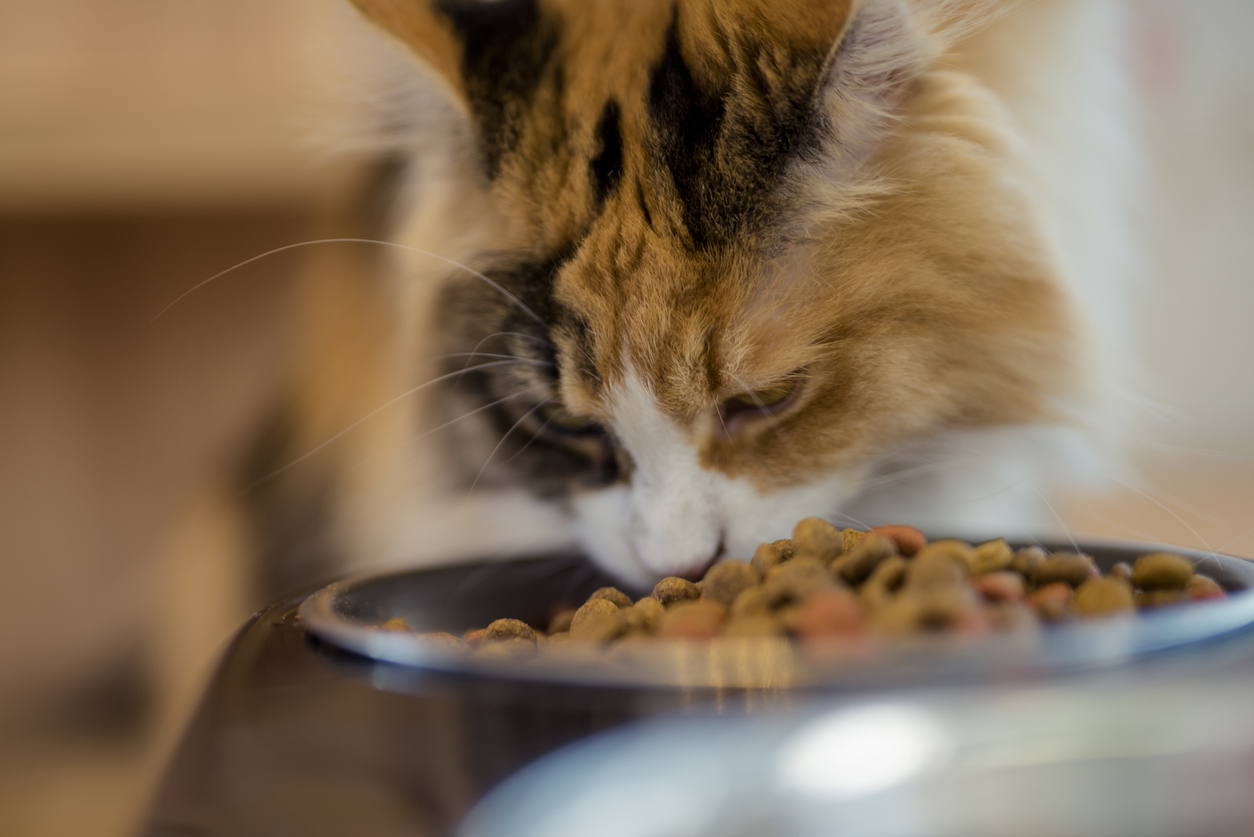
Key Considerations When Choosing Cat Supplements
Before you race to hit ‘add to cart’ or dash off to the pet store, you need to keep a few things in mind to make sure you’re getting the best of the best for your kitty.
Let’s get into some of the considerations you need to consider when choosing cat supplements.
How to Read a Supplement Label
When you’re learning how to read a supplement label, it’s important to know what to look for.
The first thing to consider is how many active and inactive ingredients are in the product. We bet you'd be surprised to hear that between 50% and 80% of joint health products contain inactive ingredients called fillers.
But why would fillers get added to a supplement in the first place?
The fillers reduce the costs of producing a product while increasing its overall perceived value. With the product packed with fillers rather than active ingredients like glucosamine, servings end up larger but less therapeutic.
Common fillers to look for on cat supplement labels include:
- Wheat
- Casein
- Gluten
- Additives
- Preservatives
- Ash
- Dextrose
- Corn
- Soy
- Sugar
Avoid these when you're shopping for a cat supplement for the best results possible. And while that might seem like it's tricky to find, we have good news!
All Integricare products are free of fillers and provide the purest form of active ingredients, creating formulas that work together most effectively. Because the active components are pure and concentrated, you don't have to administer much, but your cat will get therapeutic levels of the active components.
Packing plenty of active ingredients in a small serving size makes it both easy to serve and highly effective at the same time -- not to mention the price per serving is unbeatable!
So how exactly do you measure the amount of inactive versus active ingredients in a product?
Follow the steps below to make sure your kitty is getting the best cat supplement:
- Add up all the active ingredients in the product. TRI-ACTA, for instance, has a serving size of 1000 milligrams. The active ingredients add up to 1000 milligrams.
- Calculate how many inactive ingredients are left after subtracting this total from how much you administer. With our TRI-ACTA example, we would subtract 1000 mg from 1000 mg, which equals zero inactive ingredients.
- Take a look at this number. Compare the serving size to the active ingredients. If they match, there are no inactive ingredients. In another example, if you have a 200-milligram serving of a cat supplement, and 950 milligrams are active, this means there are 1050 milligrams of inactive ingredients. Over half of the product would be inactive in this case.
- Finally, divide that number by 100 and multiply by the serving size. This will give you a percentage breakdown of the inactive ingredients.
Remember – since liquid cat supplements require a solution to dissolve the active ingredients, liquid supplements will never be 100% pure.
In addition, it is important to consider whether Health Canada approves a product under the Veterinary Health Products Program. Quite a few supplements on the animal health market do not have this designation, so be careful to look for it. You can usually find the designation number above the barcode.
It's your lucky day once again. Integricare products all carry this designation. By complying with Health Canada's labeling guidelines, they ensure consumer safety. That means you can be comfortable with the product you're feeding your kitty.
Criteria on What to Look For in Supplements
Once you know how to read a supplement label, it’s time to learn about the criteria for choosing one.
The table below outlines some of the key criteria to remember when shopping for cat supplements.
|
Cat Supplement Criteria |
Why it Matters |
|
Price |
Make sure the supplement delivers value for money without sacrificing ingredient quality. |
|
Ingredients |
Make sure your cat supplement contains few fillers, preferably none. |
|
Benefits |
Ask your veterinarian what goals to address when choosing a supplement. For example, if they are experiencing arthritis, you may want to look for a supplement with glucosamine and chondroitin. |
|
Supplement Form and Packaging |
Decide which format is best for your cat. It could be a powder, chews, liquid, or capsule. Our preference is for powders with the smallest serving size. |
|
Manufacturer Reputation and Quality |
Be sure to support companies that genuinely care about your cat’s well-being instead of companies looking for a quick buck. Companies that offer third-party testing are ideal because it ensures the quality of the ingredients. |
|
Potential Side Effects |
Beware of ingredients added to supplements to make them more appealing. Ensure your cat’s health by reading the label carefully. |
|
Ease of Purchase |
Ensures you can easily buy the product and get it to your pet in a reasonable amount of time. |
|
Customer Service and Post-Sale Support |
Be sure to choose a company that is easy to contact, so you can ask them any questions you might have. |
The best call is to look for cat supplements that checks off as many of these boxes as possible. You should also talk to your vet about what is best for your cat; they can help guide you through the process.
Key Takeaway (TLDR): Assess your cat’s needs, talk to your vet, and read the supplement label carefully.
Tips for Implementing Cat Supplements
Once you’ve selected the best cat supplement for your kitty, it’s time to integrate it into their daily routine.
The process of integrating supplements for cats doesn’t have to be complicated.
Here are our top tips and tricks for getting supplements for cats into your kitty’s diet:
- Read the serving size carefully to avoid overfeeding, and check proper feeding instructions
- Observe your furry family member when they start taking the supplements for cats, as you’ll want to make sure it is helping, and not harming them. Diarrhea and vomiting, as well as general behaviours that would make you say, “That’s not how he usually plays/sleeps/walks…”
- Make sure you consult your vet if you notice anything strange in your cat’s litter box as well
- Kitty doesn’t like taking their vitamins? Supplements for cats can be tricky to administer. Opt for a formula that offers the highest dose of the vitamins and minerals they need in the smallest serving size, like TRI-ACTA.
When in doubt, seek your veterinarian’s advice about feeding your cat a supplement.
Where to Buy
If you’re wondering where to buy cat supplements, you’ve come to the right place!
Cat supplements are available:
- In-store at various pet retailers
- Directly online
- Online, from suppliers like PetValu or Amazon
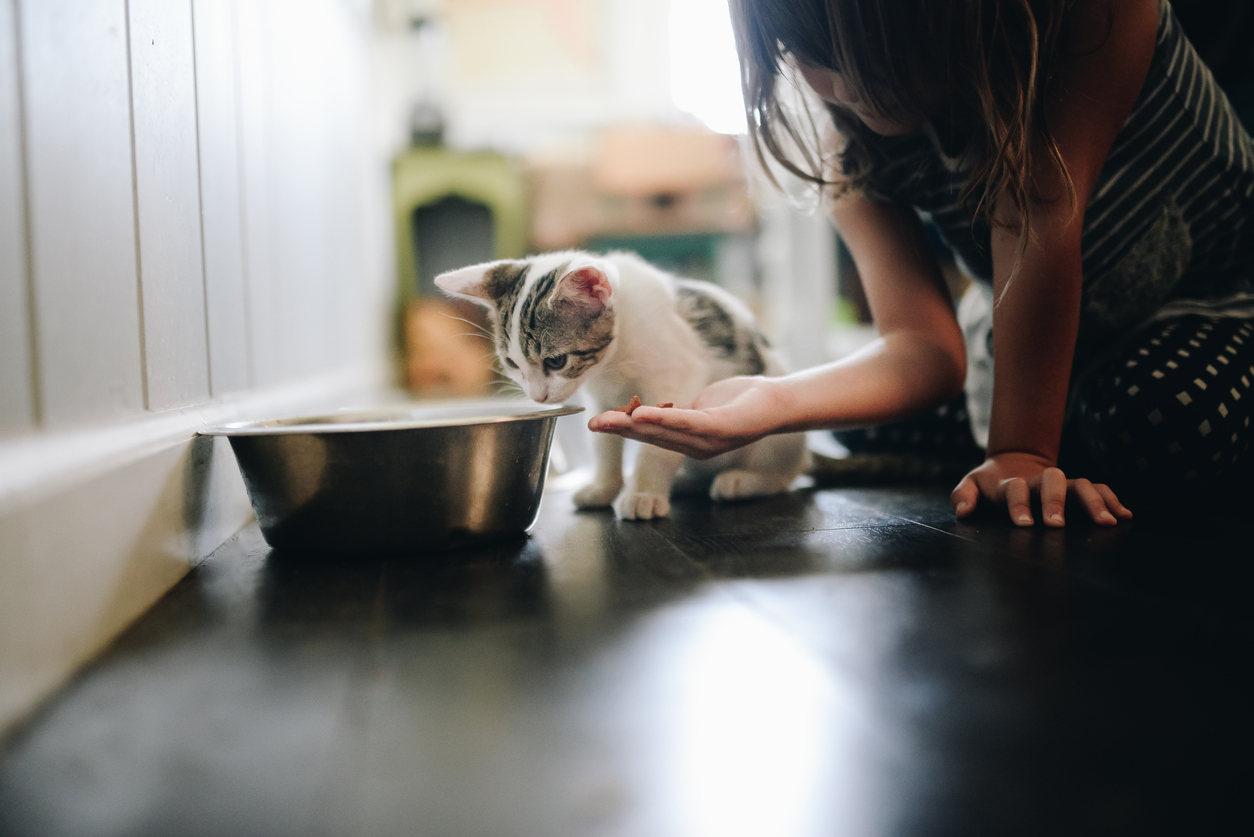
Top 5 Best Cat Supplements
We’ve finally made it to our top 5 best cat supplements list!
Our picks below feature a supplement from some of the main categories of supplementation, including senior cat supplements; cat nutritional supplements; and, of course, joint supplements.
Just remember to consult your vet before starting a course on any cat supplement.
Best Joint Supplement for Cats: Integricare TRI-ACTA
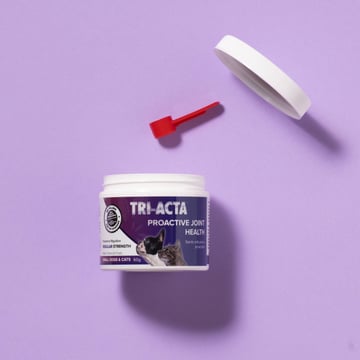
We may be a little biased, but we know our joint supplements for cats are the best out there.
Not only is it formulated with 100% active ingredients (bye-bye fillers 🙅♀️) but TRI-ACTA is also a Health Canada-approved Veterinary Health Product (VHP) designation, so you can trust your feline is getting what they need, and nothing they don’t with our supplements for cats.
TRI-ACTA for pets contains these key ingredients that will make your pet’s joints feel their best:
- Glucosamine (two kinds of glucosamine to be exact!)
- Chondroitin
- MSM
Our formula offers an economical, low cost per serving, and If you also have dogs in the house, you can serve this power-packed supplement to them as well (obviously with an appropriate dose for their size).
TRI-ACTA for Pets
A proactive approach for developing and younger adult pets to maintain optimal joint health mobility, minimize inflammation and fend off age-related ailments.

Priced $23.99 CAD as of June 2023
Best Nutritional Supplement for Cats: Tomlyn Immune Support Powder
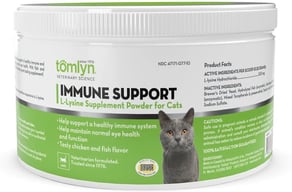
Tomlyn Immune Support Powder can help keep your kitty in tip-top shape and support their nutritional needs.
With 500mg of L-Lysine per serving, this supplement packs a punch. According to Tomlyn’s product description, it’s a great way to treat conditions like:
- Respiratory problems
- Feline herpes
- Conjunctivitis
And it is another easy-to-administer supplement, as it comes in a powdered formula.
As always, check with your vet before trying any new supplement, especially if your cat is currently feeling under the weather.
Priced $22.04 CAD as of June 2023
Best Hairball Supplement for Cats: Simply Kind Hearted Feline Squeezables Hairball Control
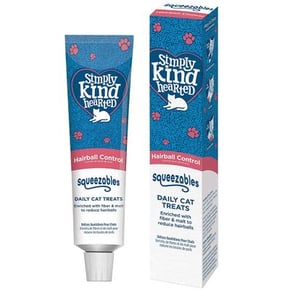
If there was something that you could say bothered most cats at some point during their lives, it would probably be hairballs.
Hairballs are the results of your cat’s grooming routine. Cats who excessively groom themselves are more likely to get hairballs. It is more common in certain cat breeds with longer hair, like Persians or Maine Coons.
You can feed your cat Simply Kind Hearted's lickable cat treat each day to support their well-being, and it is an interactive tool for you to bond with them, too!
Malt extract combined with high-quality oils and fibre helps swallowed hair pass through your cat's system naturally and prevents more hairballs. Simply Kind Hearted touts this product for being 50% treat and 50% supplement, so your cat won't resist taking it every day.
Now that sounds like a win-win solution to us!
Priced $28.79 CAD as of June 2023
Best Vet Recommended Fish Oil for Cats: Nordic Naturals Omega-3 Pet
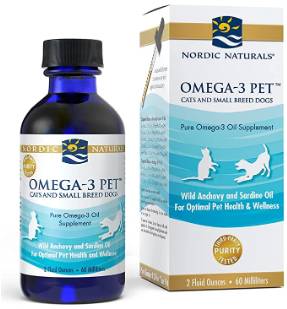
Let’s get your cat’s fur nice and luscious again, shall we?
Nordic Naturals Omega-3 Pet Liquid Supplement for Cats & Dogs is a great option if you’re looking for an omega-3 supplement to improve your cat’s heart, fur, and immune health.
The omega-3’s from this supplement are derived from fish and come in the form most readily absorbed by cats. Additionally, this supplement contains both DHA and EPA.
Priced $36.49 CAD as of April 2022
Best Supplement for Older Cats: Integricare TRI-ACTA H.A.
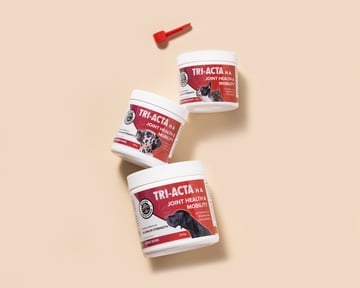
In the event that you have a senior cat on your hands, or your cat is already experiencing joint pain, our TRI-ACTA H.A. offers an extra-strength formula that contains hyaluronic acid to help improve joint lubrication and mobility.
By retaining water, hyaluronic acid lubricates and strengthens the connective tissues of the cat's body while reducing joint inflammation, both of which help keep your cat comfortable.
TRI-ACTA H.A, like every one of our products, has been tested in a third-party laboratory to ensure that only the highest quality ingredients are used in every serving, and we are passionate about helping pets and horses feel their best with joint supplements for over two decades now.
TRI-ACTA H.A. for Pets
Our maximum strength formula is optimally designed to accelerate the formation of cartilage, minimize inflammation, expedite the healing process, and improve joint conditions.

Priced $27.99 CAD as of April 2022
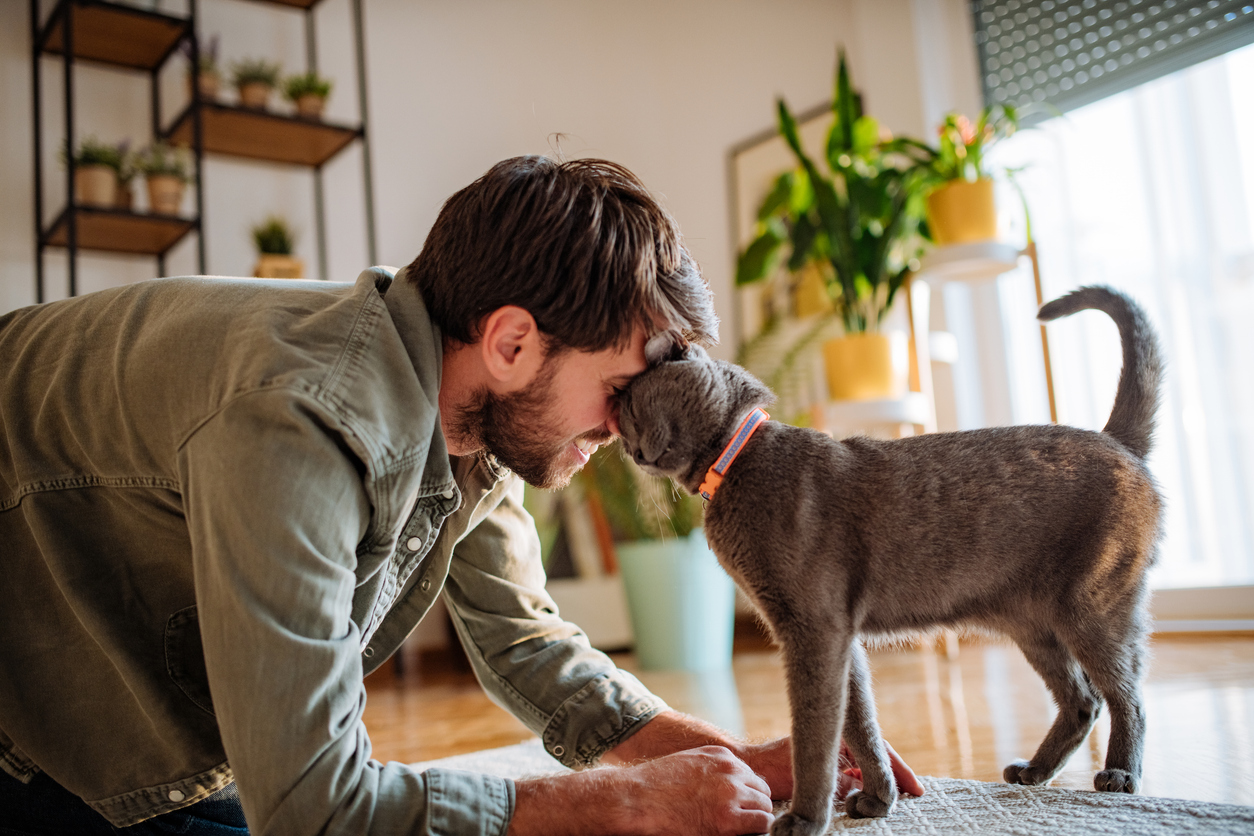
Pairing Cat Wellness with Supplements
Keeping your cat healthy and happy requires a holistic approach — that means thinking about their diet as well as which cat supplements you feed them!
There are a variety of considerations to keep in mind when you’re deciding what should make up the majority of your kitty’s diet. Their age, overall health, and the time and effort you’re able to put into their feeding schedule should all be noted.
Raw Cat Food
Looking to customize your feline’s diet to provide some cat pain relief? Maybe a raw food diet is the right option for your kitty!
Raw cat food, exactly as you’d expect, is uncooked food, mainly meat, that you feed to your cat. Raw food diets for cats usually include animal muscle and organ meat, and no fillers like grain or starch. Feeding your cat raw food can help support cats in pain by offering a protein and energy-rich diet with little to no carbohydrates.
You can also easily add cat supplements to your cat’s raw cat food diet to ensure that your cat is getting the nutrition that they need. Cat joint supplements and other options like fish oil are great choices to support your cat’s overall health.
Many owners claim the benefits of a cat raw food diet can work wonders for various problems, including cat pain relief, and also tout its ability to control the quality and source of their foods and avoid scary pet food recalls.
Unfortunately, the drawbacks may outweigh the benefits for some owners. The risks of bacterial contamination, passing disease from animals to humans (e.coli, anyone?), and the likelihood of nutritional deficiency.
Always consult your vet before switching to a diet like this for cat pain relief, just to be safe!
How to Take Care of a Senior Cat
We love our senior kitties almost as much as they love naps in their favourite sun puddle. But senior cats have different needs than kittens or even adult cats from their younger days, so you must have to approach their wellness differently.
Key changes senior cats experience in their later years (they’re considered senior cats at 7 to 12 years onwards) can include:
- Weight gain or loss
- Difficulty getting to their favourite spots
- Less frequent and thorough grooming
- Less active and playful
- Resting more
- Disoriented, confused, and meowing excessively
You can't stop your kitty from getting older no matter what you do. Aging brings many changes, but it's not a disease. Although many age-related conditions can't be cured, they can often be controlled, like arthritis.
Offering a supplement like TRI-ACTA can be one way to combat the signs of degenerative joint disease and help make senior cats more comfortable as they age into their golden years.
TRI-ACTA H.A. for Pets
Our maximum strength formula is optimally designed to accelerate the formation of cartilage, minimize inflammation, expedite the healing process, and improve joint conditions.

Senior Cat Food
As mentioned above, senior kitties need special attention to their health. And one of the biggest components of good overall health and well-being is a well-balanced, nutritionally appropriate diet for senior cats. This can include offering them specialized senior cat food.
Whether you choose to feed a dry, wet, or raw senior cat food, there are a few key considerations to keep in mind:
- Cats need fewer calories and fat as they age
- Ensure that the cat food you choose is high-quality, easy-to-digest, and high in protein
- Make sure to give them senior cat food with lower phosphorus levels (to help their kidneys) and more vitamin E (to strengthen their natural defenses)
- Consider smaller bites or soft food, especially for cats with missing teeth
Aside from those nutritional concerns, some older cats lose interest in eating, so make their dishes more appealing by adding juice from sardines or warm water, and serve them at room temperature so they can enjoy the smells and tastes.
How to Take Care of a Kitten
Taking care of an older cat is one thing, but what about when a cat is just a tiny, irresistibly-cute bundle of fur? Kittens have different nutritional needs than adolescent and adult cats. Here’s how to take care of a kitten from birth and beyond.
Newborn to Four-Week-Old Kitten Care
At the newborn stage in the kitten’s life, they will ideally still be nursing via their mother. They’ll likely nurse every 2 to 3 hours for 45 minutes during their first week.
It’s important to weigh baby kittens every day to ensure they gain weight and get the food they need to grow. If kittens can’t get the nutrition they need from Mom, then you’ll need to give them a kitten supplement, which is also called a feline milk replacer.
Once your cat reaches four weeks old, their canines will start to emerge, their vision will improve, and they’ll walk confidently. At this stage, four-week-old kitten care looks much different than caring for a newborn!
At the four-week mark, your kitten will be ready to start exploring solid kitten food. This means you should gradually start weaning them off of milk and getting them ready to eat solids only. Because kittens only four weeks old have few teeth, starting them off with wet food is important because it will be easy for them to eat.
In general, kitten food is more calorie-dense and nutrient-packed than regular adult cat food, as kittens need the additional calories to grow properly.
Best Kitten Food
Choosing the best kitten food to feed your tiny furball is important to ensure they get the right start in life. Kittens usually start to transition to adult cat food at around ten months old.
Compared to adult cat food, kitten food is:
- More digestible
- Contains higher levels of protein
- Tastes more palatable to kittens
The best kitten food contains:
- Animo acids (building blocks that make up proteins)
- Minerals such as calcium and phosphorus
- Vitamins like D3 (for healthy teeth)
- Fatty acids (help support brain function and development)
- Fats
There are three main types of kitten food that you can consider. The right choice for you and your kitten mainly depends on preference. Some cat owners prefer the convenience and long shelf-life of kitten dry food, while others are fine with feeding their kitten more times throughout the day and thus purchase wet food. Other cat owners feed their kittens a mix of the two in soft-dry kibble mixes.
The table below outlines the difference between wet, semi-moist, and dry kitten foods.
|
Type of Kitten Food |
Composition |
Important Notes |
|
Wet |
Comes in cans or pouches, leftover portions can usually be stored in the fridge for 2-3 days. Usually, a pâté or meaty chunks in a gravy or jelly. |
|
|
Semi-moist |
In-between wet and dry food, usually hard kibble with a soft inside, or soft chewable pieces. |
|
|
Dry |
Usually comes in bags, has a long shelf-life, and doesn’t require refrigeration. |
|
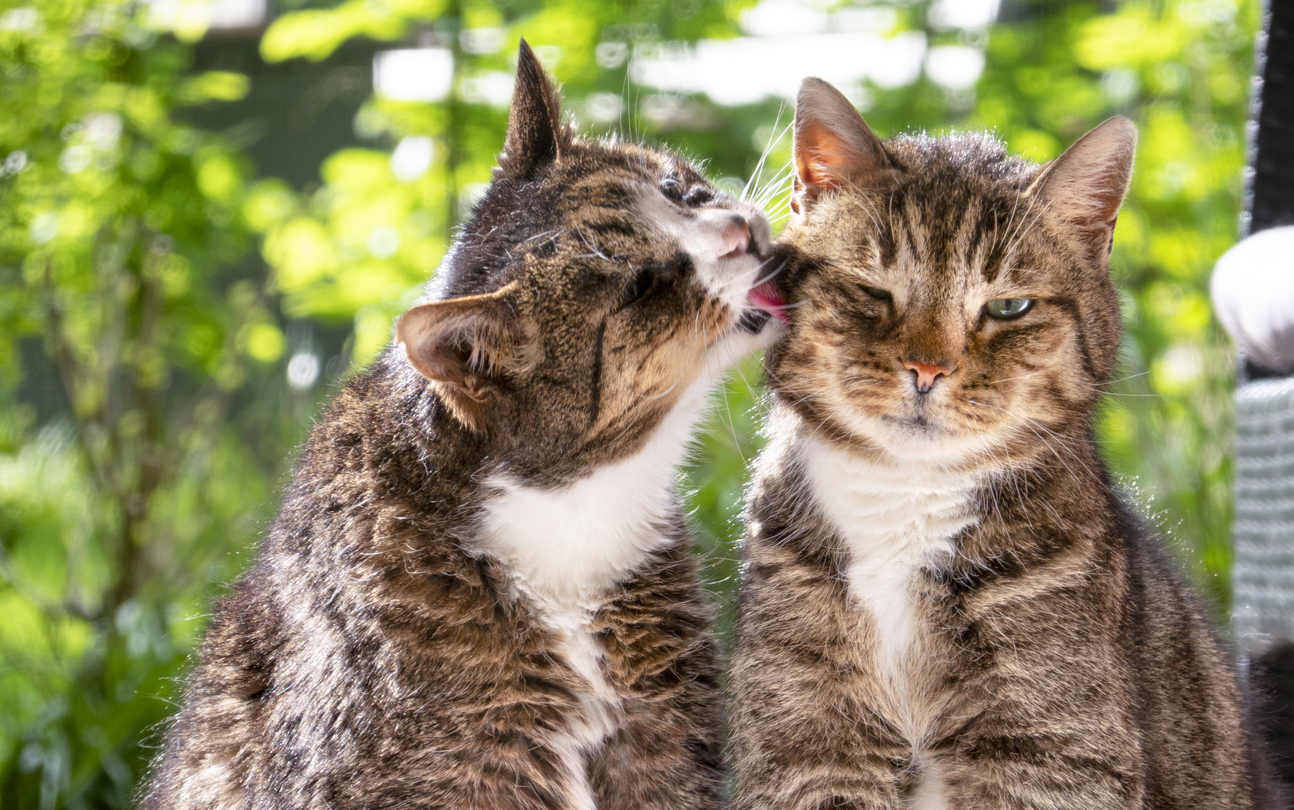
Conclusion
In this post, we’ve equipped you with all of the information you might need to know before choosing which supplements for cats you think will be most beneficial for your favourite feline, and their unique health needs.
We covered everything from cat health issues to types of supplements for cats, and how to choose joint supplements for cats. We gave you our picks for the best joint supplements for cats out there, including our very own TRI-ACTA for Pets and TRI-ACTA H.A for pets.
TRI-ACTA H.A. for Pets
Our maximum strength formula is optimally designed to accelerate the formation of cartilage, minimize inflammation, expedite the healing process, and improve joint conditions.

So whether you decide to use our supplements for cats or one of the other options we shared, know that by adding supplements for cats to your kitty’s diet, you’re helping keep them in tip-top shape for years to come.

